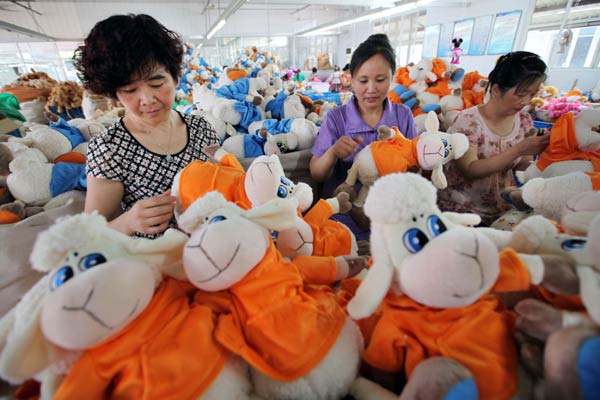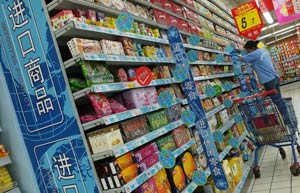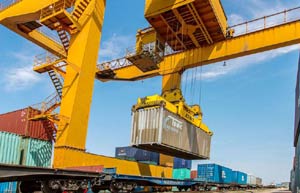 |
|
Toys are ready for export from a company in Lianyungang, Jiangsu province. SI WEI/CHINA DAILY |
High costs, bureaucracy and labor difficulties weigh on enterprises seeking to sell to foreign markets, reports Li Jiabao in Hefei, Anhui
Chinese exporters are still grappling with difficulties, even though overseas shipments by the world's largest merchandise trader have improved in recent months and the government has acted to support trade and ensure the 7.5 percent foreign trade target is achieved."Difficulties involving tax rebates and fees persist, which burden us a lot along with rising costs at home and sluggish demand abroad," Yang Jun, general manager for international trade at Hefei Rongshida Sanyo Electric Co Ltd, told China Daily.
Things became so tough that from January to April this year, exports and imports decreased simultaneously, a rare combination in recent decades.
 |
 |
China became the world's largest merchandise trader in 2013, but its foreign trade significantly slowed compared with the levels that prevailed before the 2008 global financial crisis. That crisis had a lasting impact on demand in the United States and the European Union. At the same time, domestic costs have been rising and making China's products less competitive.
Meanwhile, the country's trade growth engine is moving from the coast to inland areas, such as Anhui and Shaanxi provinces and Chongqing municipality.
Thanks to government support and a recovery in developed economies, China's foreign trade has rebounded. In the first eight months of this year, total trade grew 2.3 percent year-on-year, compared with a 0.5 percent contraction in the first four months.
But some exporters continue to complain about export tax rebate procedures.
"As tax rebates involve many authorities such as customs, foreign exchange and tax agencies, we hope their operations can be better coordinated to make the process more transparent, which will improve our cash management," Yang said.
"Sometimes, when tax rebate documents don't meet the requirements, neither the customs nor the foreign exchange officials will take the initiative to solve the problem, and we are caught in a dilemma. Communications among agencies are insufficient," Yang added.
Export tax rebates are refunds of indirect taxes paid by exporting enterprises in the production and distribution process, a policy that has been in place since the 1980s to support the country's competitiveness in foreign markets by eliminating double taxation on exported goods.
Gao Yun, director of the financial department of Anhui Jianghuai Automobile Co Ltd, said: "Although an online service has been introduced for tax rebates, paper customs declarations are still needed. And if the freight forwarder loses a declaration, it's almost impossible to get a replacement because of the insufficient information sharing among authorities."
